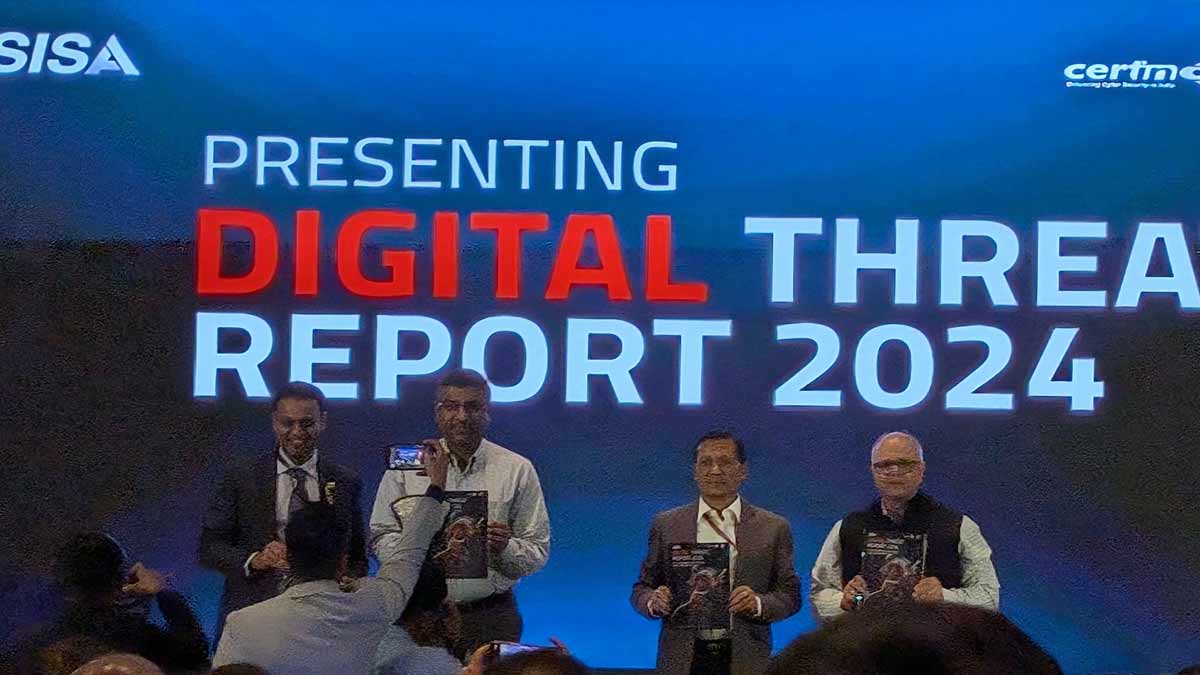Digital Threat Report 2024 launched amid rising cyberattacks in BFSI sector
 Launch of Digital Threat Report 2025
Launch of Digital Threat Report 2025
India is currently facing an increase in cyberattacks specifically targeting the banking, financial services, and insurance (BFSI) sectors. The SBI data breach of 2019, the AIIMS ransomware cyberattack of 2022, and the BSNL data breach of 2024 are recent examples that highlight the need for robust cyber security.
In light of this growing threat, SISA (Strategic Information Services Agreement), a global cybersecurity company, in collaboration with CERT-In (Ministry of Electronics and Information Technology) and CSIRT-Fin, has presented the Digital Threat Report 2024 for the BFSI sector. This report analyses the current and emerging cyber-attacks, combative tactics, and defence strategies that will be crucial in safeguarding India's financial sector.
The report was launched in Delhi by M. Nagaraju, secretary, of the Department of Financial Services, Ministry of Finance, and S. Krishnan, secretary, of Ministry of Electronics and IT, along with Sanjay Bahl, director general of CERT-In, and Dharshan Shanthamurthy, founder & CEO of SISA.
Nagaraju mentioned the need for cybersecurity and emphasised its critical role in maintaining economic stability."Cybersecurity is no longer an optional safeguard but the foundation of financial stability in the digital age. As India’s BFSI sector rapidly expands, securing digital transactions is not just a regulatory necessity but an economic imperative.” he said.
He called the report “a strategic blueprint” that will empower institutions to anticipate vulnerabilities and build a better cyber security system.
India’s digital transformation has the BFSI sector at its core, with digital payments expected to generate $3.1 trillion by the year 2028. However, with an increase in digital transactions, the scope for digital attacks has also broadened especially if there are loopholes in the security system. The Threat report not only examines the already existing threats but also highlights the evolving adversarial tactics while providing practical recommendations to strengthen defences across people, processes, and technology.
While highlighting the interconnected nature of cyber risks in the financial ecosystem, S. Krishnan noted, “The interconnected nature of the BFSI ecosystem means that a single cyberattack can have systemic repercussions, impacting multiple entities beyond the initial target. This underscores the urgent need for coordinated cybersecurity efforts at a national and sectoral level.”
Sanjay Bahl also reinforced the need for combined and in-hand intelligence sharing and said, “In today’s hyper-connected world, threats evolve faster than ever, making collaborative intelligence-sharing essential.”
As India’s financial systems continue to digitise, the Digital Threat Report 2024 serves both as a wake-up call and a guide, demanding the stakeholders adopt a unified and proactive cybersecurity approach. Data is the currency in the 21st century and access of this to the wrong people will not only lead to financial loss but also compromise people’s privacy. In such times, these reports bring our attention to the rising concern that digitalisation presents and the need to work against the rising cyber security threat.
Business